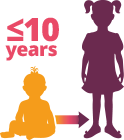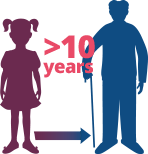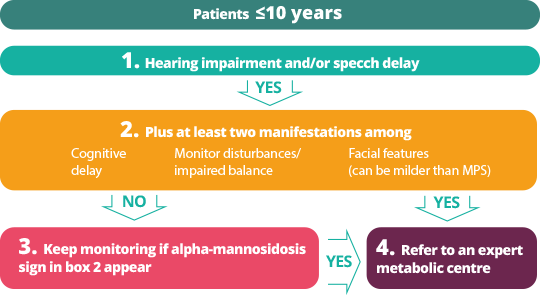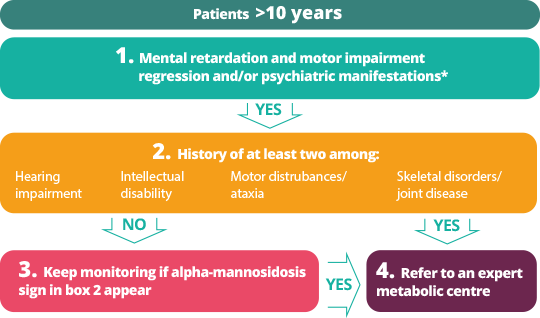Alpha-mannosidosis is a rare disease, and its timely diagnosis has the potential to influence patient outcomes since management and preventive therapies can be initiated at an early stage. Currently, early diagnosis is mainly hampered by:1
A standardised diagnostic algorithm might help to overcome this gap.1
In 2019, with no internationally recognized guidelines for early diagnosis of alpha-mannosidosis, an international working group of experts met to establish an algorithm to help general practitioners and specialists (metabolic and non‑metabolic) achieve early diagnosis and initiate adequate treatment as soon as possible.1
Two consensus proposals were developed for diagnostic algorithms of alpha-mannosidosis:

Patients ≤10 years of age in which hearing impairment and/or speech delay are the cardinal symptoms that should prompt the clinician to look for additional symptoms that may provide further diagnostic clues;1

Patients >10 years of age have different clinical presentations, and the presence of mental retardation and motor impairment progression and/or psychiatric manifestations should prompt the clinician to assess for other symptoms.1
In patients ≤10 years of age, the presence of hearing impairment and/or speech delay is the main motivator to look for alpha-mannosidosis. The presence of hearing impairment or speech delay should then lead the clinician to look for evidence of additional symptoms. If these additional symptoms are not identified, then additional monitoring can be carried out or patients can be referred to a metabolic center for additional testing at the discretion of the physician.1

Modified from fig 1 ref 1: Proposed algorithm for diagnosis of alpha-mannosidosis in patients ≤10 years. (Abbreviations: MPS, mucopolysaccharidosis)1
For patients >10 years of age, the presence of mental retardation and motor impairment progression and/or psychiatric manifestations (including acute psychotic events) should prompt assessment of clinical history for two of the following symptoms:1
If these conditions are not met then additional monitoring can be carried out, or patients can be referred to a metabolic center for additional testing.1

Modified from fig 2 ref 1: Proposed algorithm for diagnosis of alpha-mannosidosis in patients >10 years. (* Includes acute psychotic events).1
The information on this website is intended only to provide knowledge of Alpha Mannosidosis disease health topics. This information should not be used in place of advice from your GP or other healthcare professional. If in doubt please contact your doctor for advice. This website has been produced by Chiesi Pharmaceuticals. The website has been developed in accordance with industry and legal standards to provide information for healthcare professionals and the general public about Alpha Mannosidosis disease health topics. Chiesi Pharmaceuticals makes every reasonable effort to include accurate and current information. However, the information provided in this website is not exhaustive.